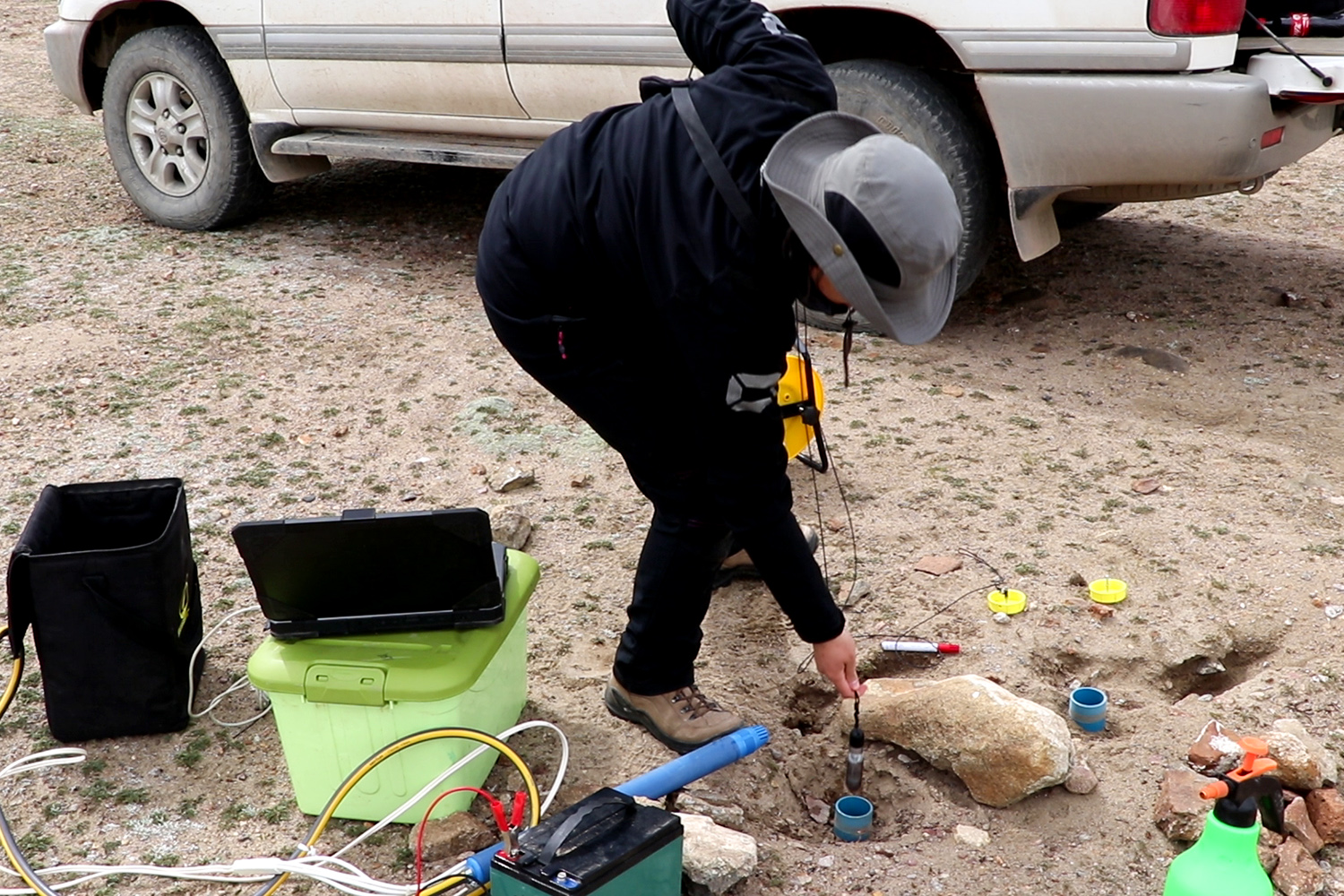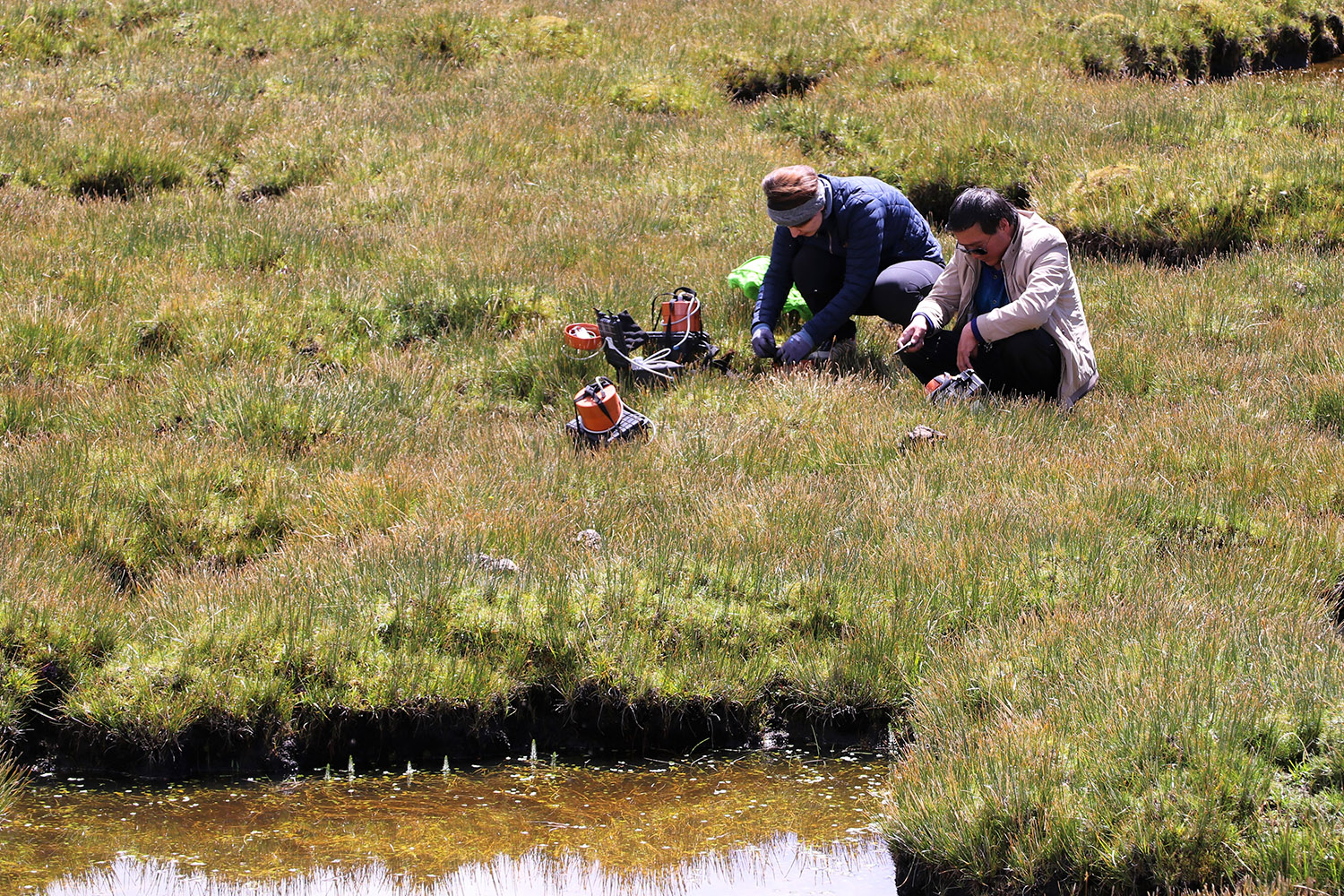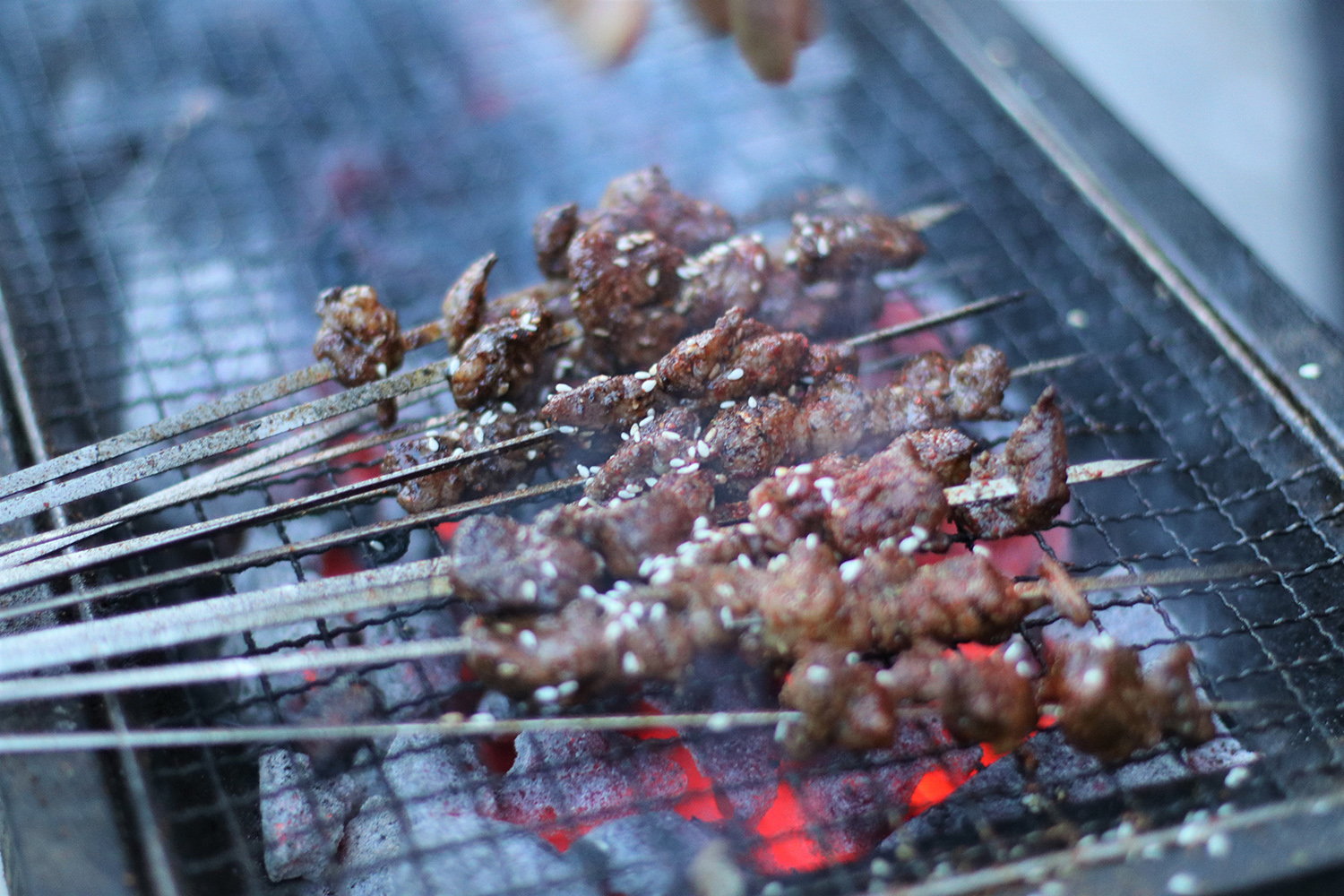Well Construction for Science Logbook TransTiP - Part 7: Measurements in the Wetlands Around Nam Co
What happens underground around the Nam Co in the Tibetan highlands? What changes are related to climate change? Scientists from the international DFG Research Training Group TransTiP are taking measurements in the wetlands around the lake. Dr. Nicole Börner, Kim J. Krahn and Alexandra Müller from the Institute of Geosystems and Bioindication report on well construction and barbecue.

PhD student Tuong Vi Tran is installing a data logger in one of her wells, installed in 2018 in the catchment area of Nam Co to record the changes in the groundwater level over the course of the year. Picture credits: Kim J. Krahn/TU Braunschweig
“From the lake itself we now move back into its catchment areas. Such a large body of water as Nam Co naturally needs a regular supply of large quantities of water in order to survive. This is mainly due to monsoon precipitation and westerly winds. Partly you can see the inflow via the rivers at the surface, but a lot happens in the underground unseen by our eyes. This is exactly what our doctoral student Tuong Vi Tran is concerned with. She looks at the groundwater that feeds the Nam Co and aims to model the water budget. But before we go to the computer, some measurements in the field are necessary, which later flow into the models. The area chosen for this is a region in which there are no glaciers and which is therefore primarily influenced by precipitation. Here it is particularly easy to determine if there are changes in the amount of precipitation that can also be attributed to climate change. Since the plateau is a huge water reservoir that supplies millions of people, permanently reduced precipitation can possibly have dramatic consequences.
Stone Storms for Well Protection
With the help of small wells drilled in different locations and sensors installed in them, long-term recordings can be made, important soil properties determined and groundwater samples taken. But even here, working on the plateau has its pitfalls, because some inhabitants like to dig up the wells and take the sensors with them. Fortunately, our doctoral students are used to adversity and develop creative ideas. By building small stone towers over her wells, Tuong Vi can protect them. The stone towers are considered lucky charms and are therefore not touched.

Doctoral student Mina Azizi-Rad during the installation of her measuring chambers, which are used to determine the concentration of CO2 emitted by the ground. She received support from our Tibetan driver. Picture credits: Kim J. Krahn/TU Braunschweig
Wetlands in transition
At the moment it is assumed that the wetlands around Nam Co are a sink for carbon. But will this remain the case if temperature and precipitation change permanently in the future? What influence does land use have? Could the sink maybe even become a source and thus drive climate change even faster? These are the questions that PhD student Mina Azizi Rad, who wants to measure carbon fluxes and quantify them more precisely, is focusing on. For this purpose, small chambers are placed on the soil to measure the carbon exchange between soil and atmosphere. The plant cover plays a very important role in this. For that reason it is crucial to be careful when attaching the chambers. The scientists do not want to unnecessarily “stress” the small plants by proceeding too roughly and thus change the values. In this subproject, the measurement data, which are laboriously collected in the field, will also be used to feed computer models and simulate various future scenarios.

Typical Chinese barbecue on the charcoal grill. Again: spicy or not spicy, that is the question. Should I help myself? Picture credits: Kim J. Krahn/TU Braunschweig
Reward for Hard Work
From time to time we deserve a little fun to lift our spirits between all the hard work. On one evening our cooperation partners prepared a typical Chinese barbecue for the whole team: kilograms of sausages and meat from beef and lamb draped on skewers and specially marinated in various degrees of spicyness. Simple and delicious! And always keep an eye on your neighbours to see if they start sweating. Then you better wait for the next “less” spicy round.
In the next article you’ll find out how work on the Zhadang Glacier at over 5600 metres above sea level.”
Text: Dr. Nicole Börner, Kim J. Krahn, Alexandra Müller
